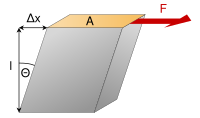
Photo from wikipedia
Wind turbines operate in atmospheric shear layer and often in yawed flow condition, which, among others, produce cyclic fluctuating loads on the blades. The unsteady aerodynamics of wind turbine in… Click to show full abstract
Wind turbines operate in atmospheric shear layer and often in yawed flow condition, which, among others, produce cyclic fluctuating loads on the blades. The unsteady aerodynamics of wind turbine in both shear and yawed wind are studied in the present work. The rotor aeroelastic behaviors considering blade flexibility are also discussed. An advanced aeroelastic model based on free wake lifting surface model and geometrically exact beam theory is established to conduct the study. The aerodynamic simulations show that the wake is asymmetric in both shear and yawed conditions. Comparison is made between the free wake lifting surface model and the skewed wake correction model used in BEM theory for the induced velocity on blade at different azimuth positions. The correction model for yawed flow in BEM theory seems to overpredict the induced velocity variations. The skewed wake induction in yawed condition causes a phase shift of angle of attack variation as a function of azimuth angle, particularly on the outboard of the blade. In addition, the blade aeroelastic deformations are found to further change the phase of circumferential distribution of aerodynamic loads. Rotor moments are influenced by the phase shifts of aerodynamic loads.Wind turbines operate in atmospheric shear layer and often in yawed flow condition, which, among others, produce cyclic fluctuating loads on the blades. The unsteady aerodynamics of wind turbine in both shear and yawed wind are studied in the present work. The rotor aeroelastic behaviors considering blade flexibility are also discussed. An advanced aeroelastic model based on free wake lifting surface model and geometrically exact beam theory is established to conduct the study. The aerodynamic simulations show that the wake is asymmetric in both shear and yawed conditions. Comparison is made between the free wake lifting surface model and the skewed wake correction model used in BEM theory for the induced velocity on blade at different azimuth positions. The correction model for yawed flow in BEM theory seems to overpredict the induced velocity variations. The skewed wake induction in yawed condition causes a phase shift of angle of attack variation as a function of azimuth angle, particularly on the outb...
Journal Title: Journal of Renewable and Sustainable Energy
Year Published: 2018
Link to full text (if available)
Share on Social Media: Sign Up to like & get
recommendations!